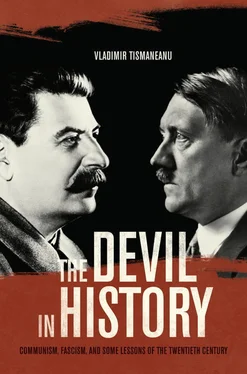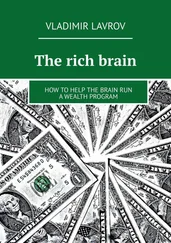In a certain way this movement had been anticipated by Yugoslav theorists (Moša Pjade, Milovan Djilas, the Praxis group) who felt compelled, by the very logic of the political conflict with the Soviet Stalinist elite, to rediscover the initial impulses of Marxist anthropology, sociology, and philosophy. 36Those most active, however, in the struggle against Stalinist obscurantism were Hungarian and Polish intellectuals, the exponents of a radical political outlook that inflamed the masses throughout the hectic months after the Twentieth Congress of the Communist Party of the Soviet Union. This fact has to be related to the traditions of the Left in those countries, but also to the existence of a confusion within the Communist nomenklatura heightened by the growing antibureaucratic radicalism of the working class. We have to take into consideration, in this respect, the evolution of the class consciousness of both the working class and the intellectuals and the existence of a certain psycho-emotional communication, even osmosis, between these two social groups. I stress these facts in order to suggest an explanation—beyond the sheer force of the political police—for the relative political passivity of the working class in other Communist countries (such as Romania and Bulgaria) and for the astonishing neutrality of the Czech and Slovakian intellectuals during the Hungarian and Polish revolts in 1956.
More than a decade after Stalin’s death, the East European and Soviet intelligentsia was experiencing a period of ethical reconstruction, an invitation to rehabilitate the whole historical evolution of Western Marxism and to a critical approach to “institutional dialectics.” Georg Lukács, an “enigmatic heretic inside his Church” (to quote Ferenc Feher) invited to participate in the debates of the Petöfi Circle in Budapest, was perceived as the representative of another Marxism than the ossified Diamat preached by the Stalinist doctrinaires; Marxist intellectual Geza Losonczy was the soul of the discussions concerning freedom of the press; Leszek Kołakowski was launching his long fight for the humanization of the “State-socialist” Polish society, appealing to the potential of a presumed Socialist New Left. In his 1957 manifesto, “Permanent vs. Transitory Aspects of Marxism,” Kołakowski made the seminal distinction between institutional Marxism and intellectual Marxism. While the first was mere religious dogma manipulated by those in power, the second was characterized by “radical rationalism in thinking; steadfast resistance to any invasion of myth in science; an entirely secular view of the world; criticism pushed to its ultimate limits; distrust of all closed doctrines and systems… a readiness to revise accepted theses, theories and methods.” 37Freedom had again become the highest good for human beings released from the asphyxiating dependence on the party’s definition of truth. In the Soviet Union, the shestidesiatniki , “the people of the sixties,” formed a community that “had ‘the ability and desire to think, to reflect about life and its complexities.’ They sought to understand the reality ‘behind every word.’” 38A “spirit of revisionism” came about in the Soviet bloc that would fundamentally mark the political and cultural dynamics of the region in the late 1950s and 1960s. In this context, revisionism, a term coined by neo-Stalinist orthodoxies to stigmatize critical currents of thought and the main adversary encountered by ruling bureaucrats since the factional struggles of the mid- and late 1920s, became the main foe of the neo-Stalinist ideological construct. 39One should note, however, that revisionism was not a social movement; rather, it was “a diffuse ideological current that articulated itself in equal parts in official and unofficial fora and which was of a highly various character in different countries.” 40
The favorite theme in the discourses of East European philosophers, sociologists, and men of letters in general was the return to an idealized Marx: the attempt to detect those elements in Marx’s original design that could justify the politically liberating changes within the system. Moreover, that endeavor was conceived as a rediscovery and reinterpretation of Marx’s early works, of the whole Marxian philosophical legacy detested by the Stalinist ideologues. The concept of alienation became the basis of the most impassioned philosophical controversies, fostered the case for liberalization, and provided the theoretical basis for political criticism. In fact, the “dictatorship of the proletariat” was felt as exactly the opposite of the “bright future” promised by the founders of Marxism. It was viewed as a caricature of the project of emancipation announced by the Communist Manifesto.
The immediate effect of the general intellectual unrest was the configuration of a fundamentally radical answer to the obvious structural crisis of the East European Soviet-type societies. One of the most interesting expressions of this phenomenon was the 1964 Open Letter of the Basic Party Organization of PZPR (Polish United Workers’ Party) and to Members of the University Cell of the Union of Socialist Youth at Warsaw University written by two left-wing antibureaucratic intellectuals, Jacek Kuroń, an assistant professor of pedagogy, and Karol Modzelewski, a member the History Department at the University of Warsaw, son of Zygmunt Modzelewski, a Communist old-timer and the first foreign minister of Communist Poland. The document, a striking example of critique of the party from the antitotalitarian Left, claimed to uphold the true principles of Marxism-Leninism against the fictitious party democracy, to defend workers’ rights against top-down decision-making. 41The same year, Czech legal scholar Zdeněk Mlynář drafted The State and the Individual (an anticipation of his 1968 “Towards a Democratic Political Organization of Society”), in which he tried to reconcile democracy and socialism. In this document, the author (a former roommate of Mikhail Gorbachev during their student years at Moscow State University in the early 1950s who became the main ideologue of the Prague Spring in 1968) reasserted the role of social organizations in the process of democratization. Moreover, he emphasized workers’ self-management bodies in the factories in order “to overcome the system of planning by decree and to establish the socialist enterprise as an autonomous agent that would be able to enter the market in that capacity.” Moreover, the leading role of the party could be maintained, according to Mlynář, only if it was made up of a “conscious vanguard” in service to the “overall interests and socialist goals of the entire society,” and it didn’t take for granted its leadership but led by “tireless persuasion.” 42
It was an exhilarating search for the “realm of freedom” prophesized by Marx, an explosion of what Hegel called unglückliches Bewusstsein (unhappy consciousness), a revolt of the libertarian undercurrents that had survived the mortifying experience of Stalinism. The theoretical manifestations of these undercurrents provided a new semantic horizon , the coalescence of a new emotional and intellectual infrastructure that was translated into a resurgence of repressed philosophical topics, above all humanism as a privileged metaphysical concern. The crushing of the Hungarian Revolution and the attempt to tame the Polish intelligentsia, the hardening of the political line in East European countries between 1957 and 1961, and the harsh antirevisionist campaign after the publication of the program adopted by the Communist League of Yugoslavia could not obstruct the creative philosophical openings nor hinder the antidogmatic impetus that resulted in the humanist-ethical outlook execrated by the impenitent Stalinists and neodogmatics. Revisionism was suppressed because of its commitment to values fatally perverted through official manipulation. It was a fallacious strategy based on wishful thinking and a doomed yearning for moral regeneration of the ruling elite. It foolishly demanded dialogue with those who valued only brutal force. Detlef Pollack and Jan Wielgohs accurately defined its ideological character as “system-immanent.” In the same vein, Adam Michnik aptly described the inescapable dilemma of neo-Marxist revisionism in East-Central Europe: “The revisionist concept was based on a specific intra-party perspective. It was never formulated into a political program. It assumed that the system of power could be humanized and democratized and that the official Marxist doctrine was capable of assimilating contemporary arts and social sciences. The revisionists wanted to act within the framework of the Communist party and Marxist doctrine. They wanted to transform ‘from within’ the doctrine and the party in the direction of democratic reform and common sense.” 43
Читать дальше












